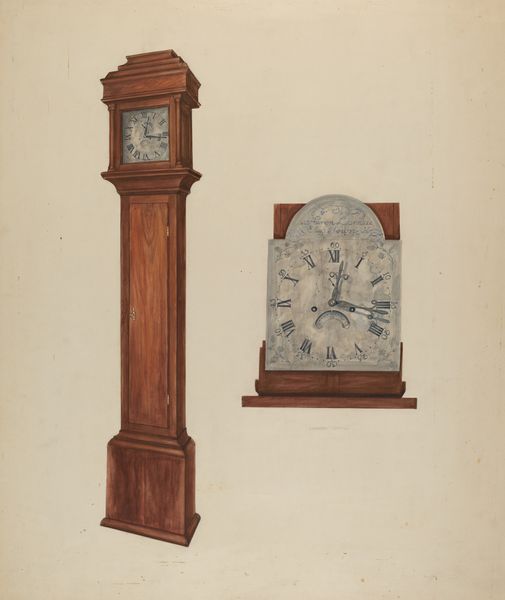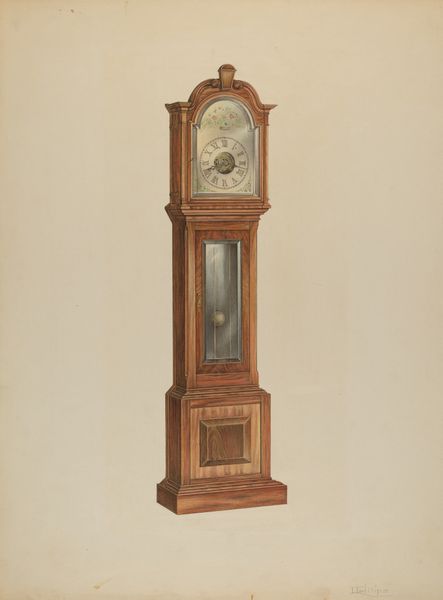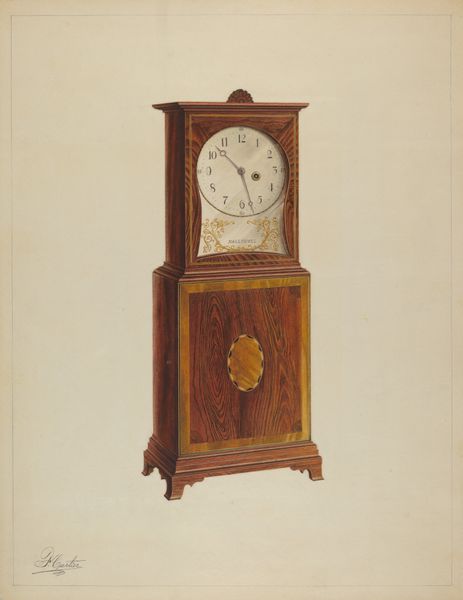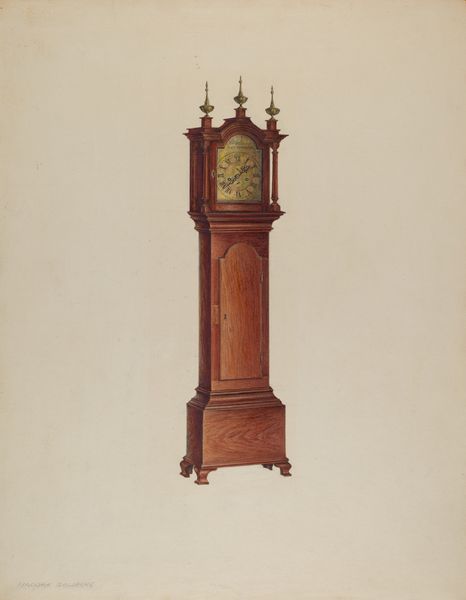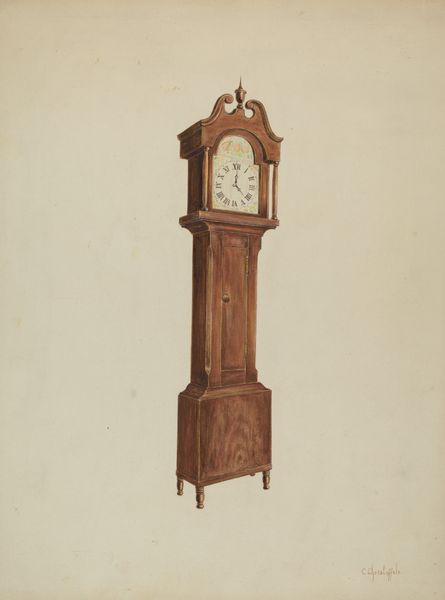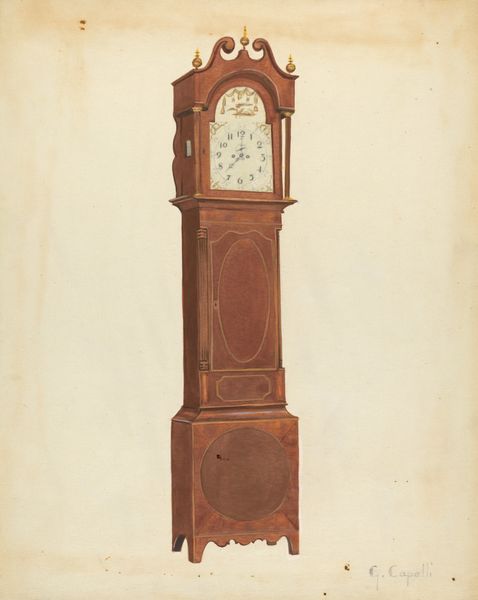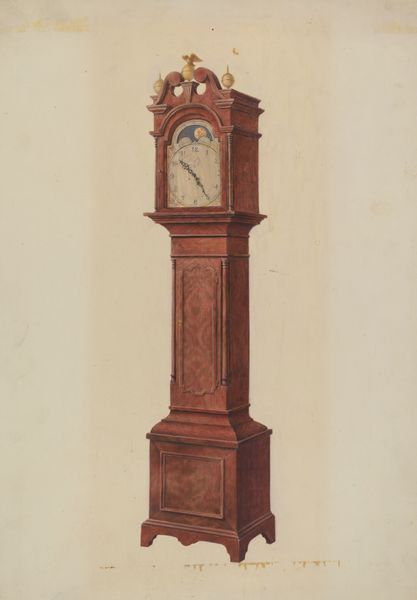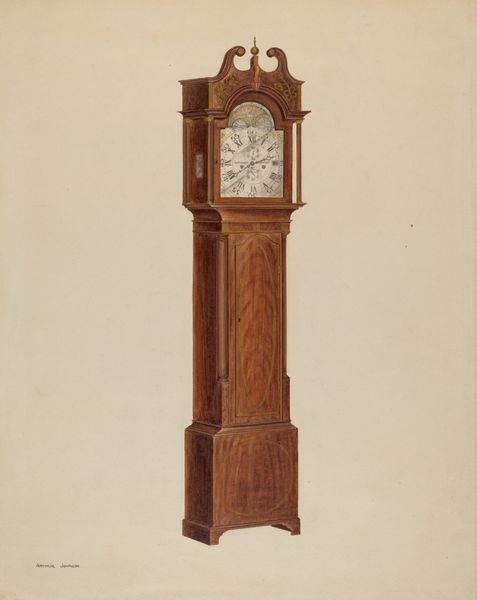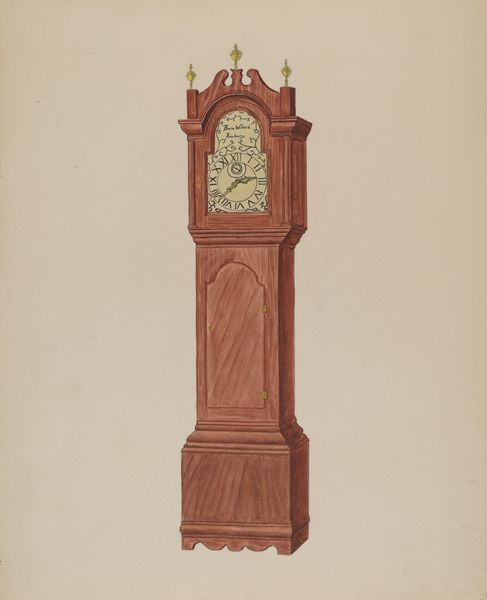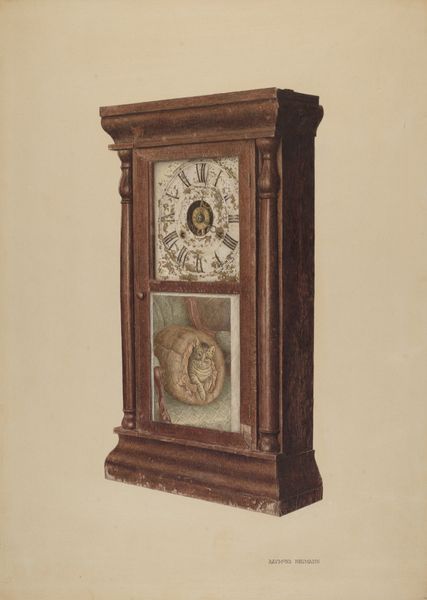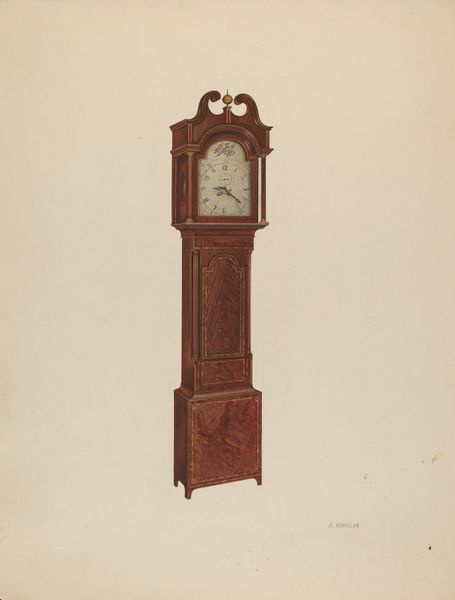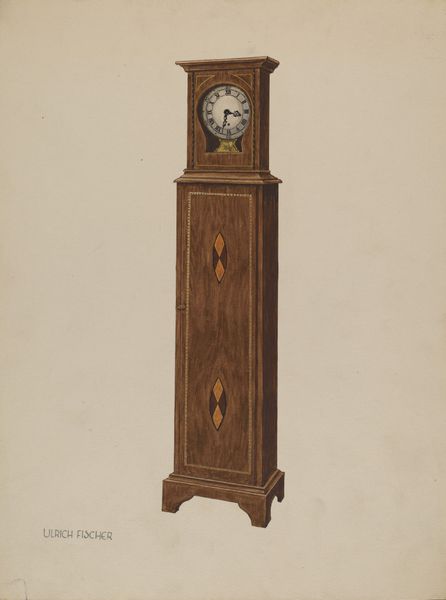
drawing, paper, watercolor, ink
#
drawing
#
charcoal drawing
#
paper
#
oil painting
#
watercolor
#
ink
#
watercolour illustration
#
watercolor
Dimensions: overall: 45.5 x 36.6 cm (17 15/16 x 14 7/16 in.) Original IAD Object: 35"high; 13 3/4"wide; 4 1/2"diameter
Copyright: National Gallery of Art: CC0 1.0
Curator: This watercolor and ink drawing from around 1938 depicts a shelf clock. I’m struck by the meticulous rendering, the detail applied to an object of everyday life. What catches your eye? Editor: I'm interested in the combination of media— watercolor and ink on paper. What's revealed by understanding these material choices? Curator: Well, consider the social context. The 1930s: mass production, economic hardship, but also a growing interest in American craftsmanship. This drawing captures both. The watercolor and ink are relatively accessible media; think about who might have had access to fine art materials versus these more humble options. Editor: It feels like a documentation almost, an inventory. Was this artist thinking about mass production, or more focused on this specific clock as an individual object? Curator: I think it’s both, isn't it? The artist meticulously renders a mass-produced object, highlighting its construction, its material presence. Look closely at the wood grain simulated through the watercolor. What labor was involved in *making* a shelf clock at that time? Where was that clock produced? Whose labor drove that production? Editor: That’s a great point. Were there other objects that the artist chose to represent at this time? Curator: What other domestic objects were gaining prominence, and being impacted by manufacturing processes? Chairs, radios... household appliances intended for consumption. This artwork encourages to really *see* those objects and the systems that created them. Editor: Thinking about this piece as connected to material culture and the history of manufacturing adds so much depth. I hadn't considered it in that light. Curator: Exactly! Focusing on the materials and mode of production offers a potent lens. Now when you see this clock, or another like it, what do you notice? Editor: I notice the way the drawing prompts us to consider the lives, the hands, behind its production.
Comments
No comments
Be the first to comment and join the conversation on the ultimate creative platform.
